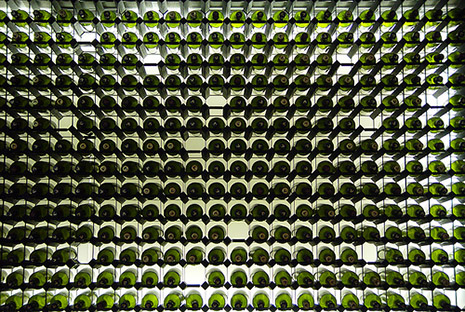AS if things weren’t bad enough for the Australian wine industry, now there’s this: the Dutch Disease. No, it isn’t a fungus spread when you plant tulip bulbs in the vineyard or something you saw on the television series House. It’s much more serious than that. And it’s hitting South Africa, too.
I’ve written several times in recent years about Australia’s continuing wine crisis. It seems like everything that could go wrong has gone wrong. Too much heat, too little water, excess capacity, collapsing demand – even smoke-tainted grapes caused by runaway bushfires.
The net effect of all this bad news is the continuing shake-out in the Australian wine industry, with shuttered wineries, growers abandoning their vineyards and Foster’s, the drinks behemoth, looking for ways to offload the wine assets that it paid so much for a few years ago.
This isn’t the first time Australia has experienced a boom-bust wine cycle. Kym Anderson, the eminent University of Adelaide wine economist, reckons that there have been four previous cycles since the 1850s. This may not even be the worst crisis on record, although that news would be cold comfort to today’s struggling wine growers.
Now there is more bad news and it’s the result of too much good news. Good news is bad news? Yes. Read on.
Curses!
The Dutch Disease is one element of what political economists call the Resource Curse, the paradox that many of the world’s most resource-rich nations are surprisingly poor in terms of the population’s overall living standards. Much of the resource curse is political – the cursed nations are poorly governed. Corrupt officials, who control access to resource wealth, put personal gain ahead of social welfare. Governments that don’t need to rely on public support for tax revenues lose any sense of democratic accountability. The riches of the resource sector are not enough to make up for the impact of corruption and economically inefficient policies on the rest of the country.
I don’t know anyone who is arguing that Australia is in danger of this political aspect of the Resource Curse, but the economic problems associated with natural resource wealth are already apparent.
The Dutch Disease is the name economists give to the economic problem of too much good news in one industry and its negative impact on the rest of the economy. If one sector of the economy gets hot on global markets (think oil exports, for example) one effect can be that export sales increase the demand for the country’s currency, causing it to appreciate in real terms. The rising currency value makes all the nation’s other products more expensive on foreign markets, sending their sales into a tailspin.
The Dutch Disease is actually two plagues in one. As the currency rises, it not only makes non-resource exports more expensive abroad, it also makes imported goods less expensive, giving them an advantage over domestically produced items. Imports flow in while the export sector becomes increasingly focused on resources; other exports fall and the economy becomes more vulnerable to external shocks in the export market. It’s a risky situation.
The good news and the bad news
That’s how good news in one part of the economy can backfire. The Economist magazine invented the term to describe the dilemma of the Netherlands after a big gas field was found there in 1959.
The good news/bad news in Australia is clearly the fact that China’s economy is growing rapidly and sucking in the natural resources that Australia has in considerable abundance. But big purchases of the Australian dollar needed to pay for these products has pushed the currency up, making Australian wines more expensive here in the United States.
This helps explain why off-premises sales of Australian wines are still falling here even though many other segments of the wine market are recovering. Recent Nielsen retail data show the US wine market growing by 4.3 per cent in the period ending in August, but sales of Australian wine falling by 7.5 per cent. (Data from the November issue of Wine Business Monthly.)
As the chart above shows, the Australian dollar has continued to appreciate since these data were compiled, magnifying both the Dutch Disease problem and the sense of crisis in the Australian wine industry.
Not all of the Australian wine industry’s current problems are due to Dutch Disease woes. As I said earlier, Australia’s been hit by a perfect storm. But the exchange rate problems make everything worse. Like the weather, they are beyond the control of growers and wine makers but an inescapable fact of wine economics life.
South Africa also hit
Australia is not alone. South Africa seems to be experiencing the Dutch Disease as well. Many factors have contributed to the sharp rise of the rand against the dollar (shown on the chart below), but surely the surge in gold prices must be the most important one. As speculators and investors who have worried about inflation turn to gold, their purchases have driven up the value of South Africa’s currency as well.
This helps explain why sales of South African wine in the United States have been in a bad slump. Nielsen data indicate that South African wine sales fell by 8.3 per cent in August and by 9.4 per cent in the last year.
The US dollar’s rapid fall will affect all countries that depend on our huge markets for exports, but inevitably some will be hit more than others. Those, like Australian and South Africa, that suffer the Dutch Disease will be challenged the most.
We’ve entered an era of extremely unstable currencies, reflecting both the inherent instability of international financial flows and the increasingly cut-throat battles in the global currency wars. Inevitably many industries – including wine – will get caught in the crossfire. •
FX Charts © 2010 by Werner Antweiler, University of British Columbia. All rights reserved.




